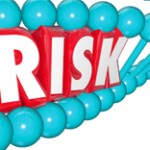CHICAGO – Rheumatology needs further cost-effective and validated methods to track the link between environmental exposure and autoimmune diseases, said Frederick Miller, MD, PhD, head of the environmental autoimmunity group at the National Institute of Environmental Health Sciences (NIEHS), National Institutes of Health, in Bethesda, Md. Dr. Miller addressed the audience of the session, “Impact of Environmental Health on Autoimmunity,” here at the 2011 ACR/ARHP Annual Scientific Meeting held in Chicago in November 2011. [Editor’s note: This session was recorded and is available via ACR SessionSelect at www.rheumatology.org.]
Specific areas that require more research include phenotypes, genotypes, the synergy between multiple infectious and noninfectious exposures, the timing of exposure, and the mechanisms involved, he noted. “All of these studies require increased resources and increased ways of coordinating efforts,” Dr. Miller said.
Despite the need for more research, Dr. Miller acknowledged an “explosion” of information in the last decade related to the environment and autoimmune diseases. This interest included an NIEHS symposium in September 2010, where an expert panel identified areas for future investigation.
“Our general finding, based on existing evidence, is that there is inadequate information to assess [the environment’s] possible contributions to disease pathogenesis. We are in our infancy with these investigations,” he said.
Dr. Miller’s work with the NIEHS symposium panel divided exposure-related research into chemical factors, physical factors, biological agents, and a broad miscellaneous category.
Regarding chemical exposure, the panel feels confident stating that crystalline silica exposure contributes to rheumatoid arthritis (RA), scleroderma, lupus, and antineutrophil cytoplasmic antibody–related diseases, and that solvent exposure contributes to scleroderma. Smoking also is believed to contribute to the development of anticitrullinated protein antibodies and RA, he said.
Further research is needed regarding timing of exposure in relation to disease onset, the potential contribution of nonoccupational sources of exposure, gender differences in exposure, the role of food chemicals, and pathogenic mechanisms.
In the future, the NIEHS panel would like to explore connections between asbestos and RA and lupus, cosmetics and autoimmune disease, pesticides, and organic pollutants.
Data regarding physical factors and autoimmune disease are not as plentiful, Dr. Miller said. Although there seems to be an association between increased ultraviolet exposure and a decreased risk of multiple sclerosis, some remaining questions include the connection between ionizing radiation and autoimmune disease and the role of sunlight exposure as protection from the development of RA.
Some findings that are more certain regarding biological agents include the contribution of gluten to the development of gluten-sensitive disease and the connection between a high dietary intake of L-tryptophan and eosinophilia myalgia syndrome. “Future questions include the connection between Epstein-Barr virus and autoimmune disease, particularly multiple sclerosis, lupus, and RA; omega-3s as protection for type 1 diabetes; and the role of vitamin D in autoimmune disease,” Dr. Miller said.
Smoking, Silica Exposure, and Disease
Glinda S. Cooper, PhD, a senior epidemiologist with the U.S. Environmental Protection Agency, discussed the role of smoking and silica exposure to autoimmune disease.
She concluded that smoking does not necessarily cause disease but may help set the stage for disease to occur. “It’s not producing the disease, it’s changing the backdrop upon which exposures and experiences act to produce the pathogenic response to these antibodies,” Dr. Cooper said.
She discussed the initial smoking and disease research that began in the 1940s and 1950s. Research specifically connecting smoking and RA began in the late 1980s and early 1990s. This research actually grew out of an investigation into oral contraceptives and RA, which was not originally intended to explore smoking and RA. “The body of research developed because the data were there,” she said. “By 2006, there were more than 50 studies looking at RA and smoking.”
Various data show a modest risk between smoking and RA, involving an interaction between smoking, the HLA shared epitope, and anticyclic citrullinated protein–antibody positivity, Dr. Cooper said.
“What these data lead to is that smoking leads to generation of modified peptides in the lungs. That interaction is reflecting a particular affinity of the DRB epitope and its ability to bind those peptides. That activation involves other genetic variants and environmental exposures, and all leads to priming for system immunity,” she said.
Dr. Cooper also detailed research connecting silica dust to autoimmune disease. This research goes back almost 100 years and has focused mostly on occupational exposure for miners, foundry workers, and various construction trade workers. Autoimmune diseases associated with this exposure include RA, lupus, and scleroderma.
“With silica, as with smoking, you have the potential for immune effects in the lungs that have more profound implications in terms of systemic effects,” Dr. Cooper said. This includes destruction of macrophages via the release of intracellular peptides.
Dr. Cooper said that the actual exposure to silica and smoking may occur years before disease onset. She also noted that exposure in the lungs does not just stay in the lungs—it also has effects on the immune system. Finally, she highlighted the role of prevention.
“From a public health perspective, prevention is cheaper, more effective, and more productive, and that might be where we want to put our efforts,” she said.
Genes and Environmental Interactions
Research that focuses on lupus and the gene–environment interaction was the focus of a presentation by Judith James, MD, PhD, Lou Kerr Endowed Chair in biomedical research at the Oklahoma Medical Research Foundation in Oklahoma City. Among various research that Dr. James discussed was a study in the area of associated lupus genetic haplotypes interacting with the Epstein-Barr virus to induce lupus autoimmunity. There is also research into interferon regulatory factor 5 (IRF5) and a possible strong genetic association with lupus. “The hypothesis is that IRF5 risk and nonrisk haplotypes will drive distinguishable host gene expression patterns in B cells. We saw differences and see some genes upregulated because they have IRF5 haplotypes,” Dr. James said.
Research in this area is providing a proof of concept, encouraging researchers to look at how genetic associations and candidate environmental factors come together in lupus patients, she said.
However, like other environmental exposure areas, there is still a great deal of research to be done. “There’s still so much we don’t know, even though significant advances are being made,” Dr. James said.
Vanessa Caceres is a freelance medical writer in Bradenton, Florida.



